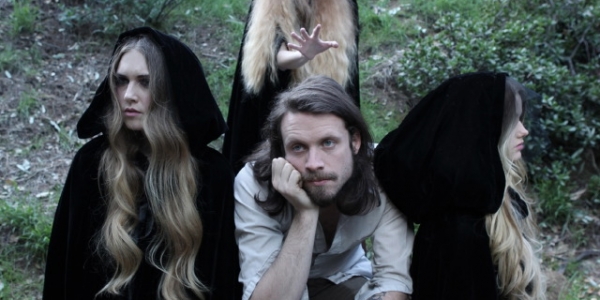The idea of creating magic through the combination of artistic platforms Van Hout employs – dance, visuals and song – is what lies at the very essence of Briwyant. The production not only explores this idea of magic, but the connections existing between indigenous and urban cultures – an underlying theme throughout. “I went off in search for the contemporary equivalent on my back doorstep,” says Van Hout. “Where can you find the dreaming in the city? Where do we find expressions of that place – that dreaming place?”
For Van Hout, the idea of exploring Australia’s vast culture – both in a traditional and urban setting – was something she has always been interested in. Briwyant allowed her to explore these themes in a new and exciting ways. “When we live in Australia our connection to it is undeniable, what I tired to say in Briwyant is that as Australians – whether we are conscious of it or not – we have a connection to the land and there are elements of culture that seep into everyday and mainstream life.”
Indigenous dance plays a central role in the production and Van Hout maintains Briwyant is a fusion of traditional styles, only with a modern touch. “I’ve developed an aesthetic that is undeniably indigenous, but it’s not traditional. A lot of the female dancers movements are inspired by indigenous women’s locomotives or shunts and a lot of the mens movements are inspired by the flamboyant nature of mens dancing.”
Another significant facet of Briwyant is the use of projected visuals, an intangible element brought to life by the dancers. These projections not only enhance the overall viewing experience, but play an important role in communicating the stories and magic of Briwyant. “The projected visuals support the idea of melding the past into the future – this idea of bringing the past to the future,” says Van Hout. “There are a few passages where the projections are live and interactive, and are manipulated by the dancers. Using the projection was me trying to enforce the idea of making magic happen.”
One of the biggest challenges Van Hout faced when assembling Briwyant was correlating her inspirations and indigenous culture with dance, visuals and song. “The most challenging thing is being true to myself while still acknowledging my inspiration, as well as harnessing the talents of all the people involved – each one of them is quite unique. Another challenge is representing my people with respect and making sure that what I’m saying through dance is relevant and conducive to the longevity of cultural expression.” say Van Hout.
Van Hout also wanted to highlight other aspects of indigenous culture largely ignored, such as humour. Van Hout insists comedy plays an integral role in the production. “I like to make works that are funny and that highlight indigenous humour – our humour – like the way we make light of heavy situations,” she says.
Briwyant looks to shed more light on a number of different aspects that make up Australian culture. In doing so Van Hout has created a new and exciting interpretative tribute to an indigenous Australian aesthetic. “There is juxtaposition between the mundane and the extremely sacred and I think there is a parallel that we wouldn’t normally see. I’ve tried to demystify some of that,” Van Hout says.
With the Melbourne premier of Briwyant only weeks away, Van Hout is visibly excited at the prospect of bringing her production to a new audience, regardless of the reaction. “We ask people to maybe enjoy it, or maybe understand it – you know, come away with something different. The challenge is to portray something in the right light because you can never manipulate how an audience feels, you can only surmise how they might react.”
BY JAMES W NICOLI







